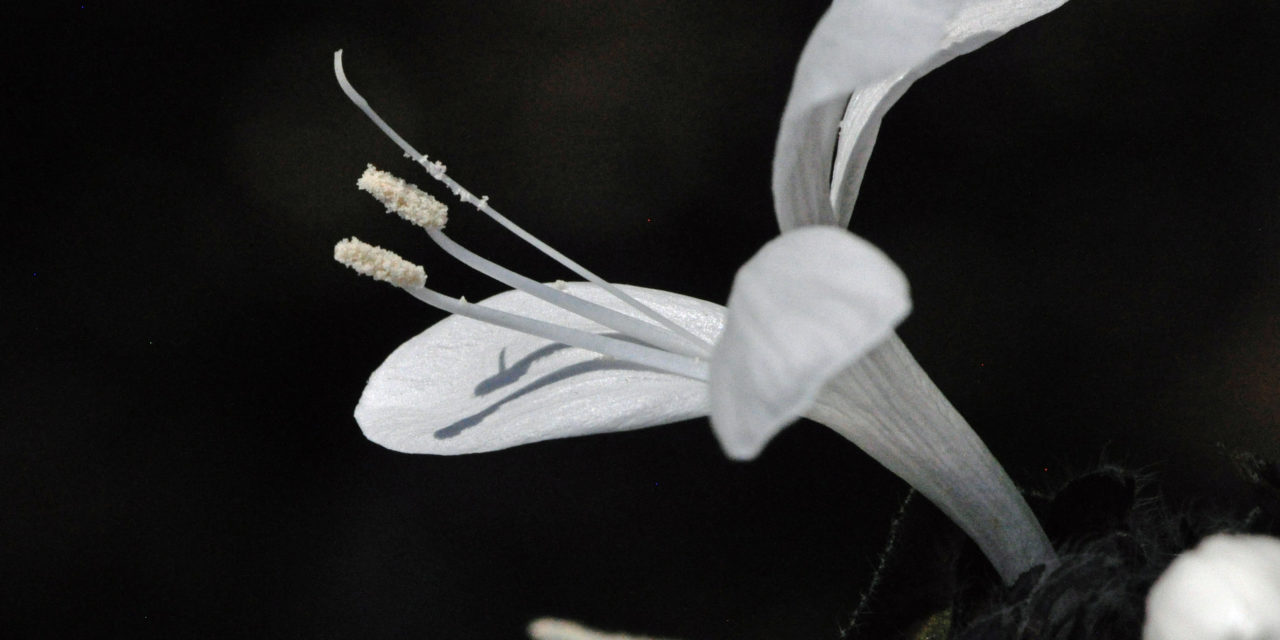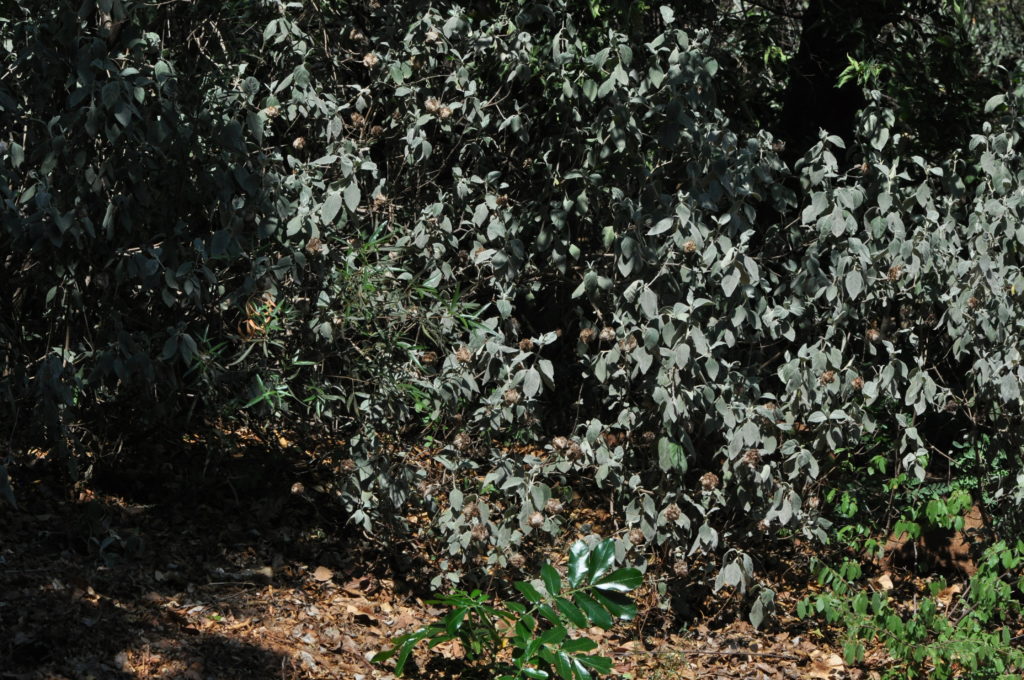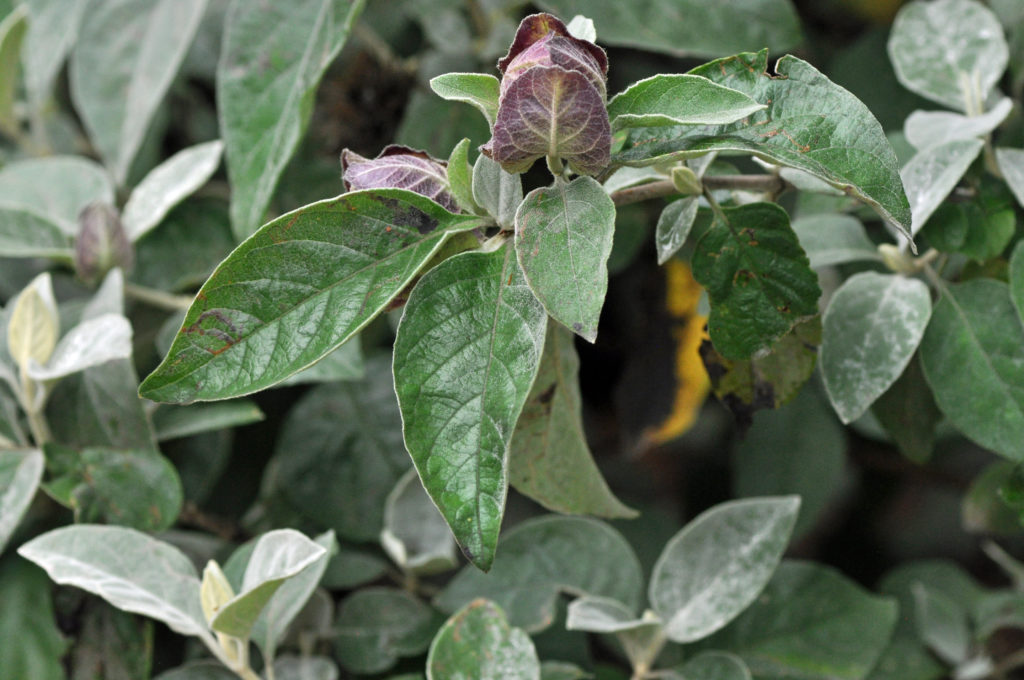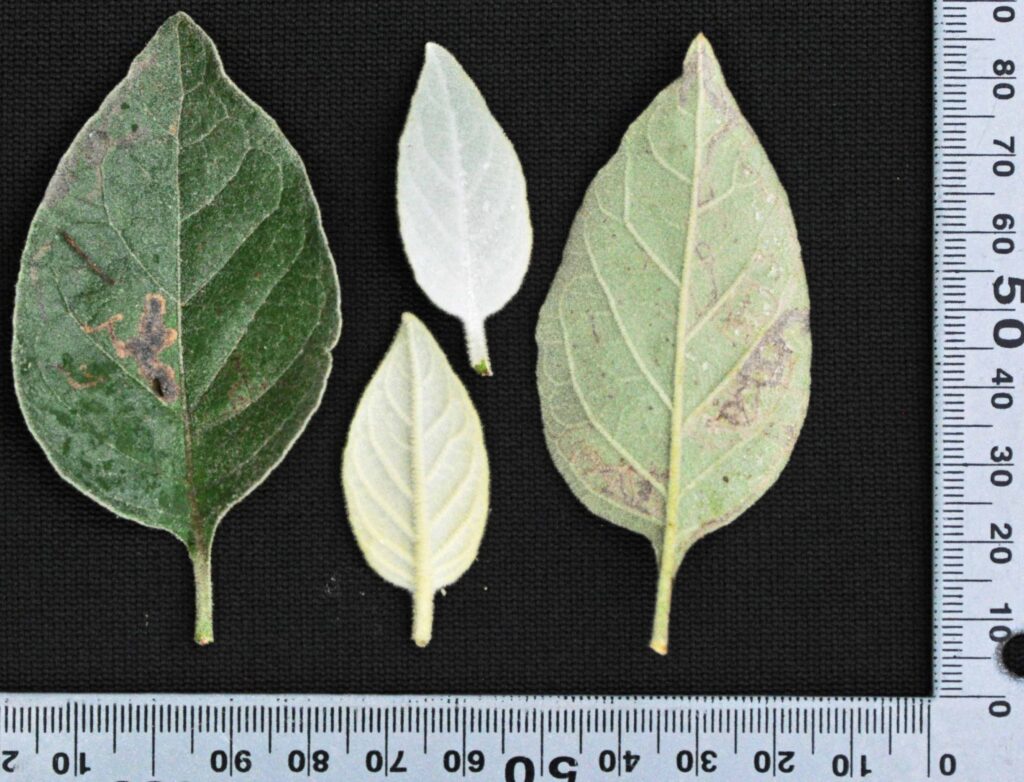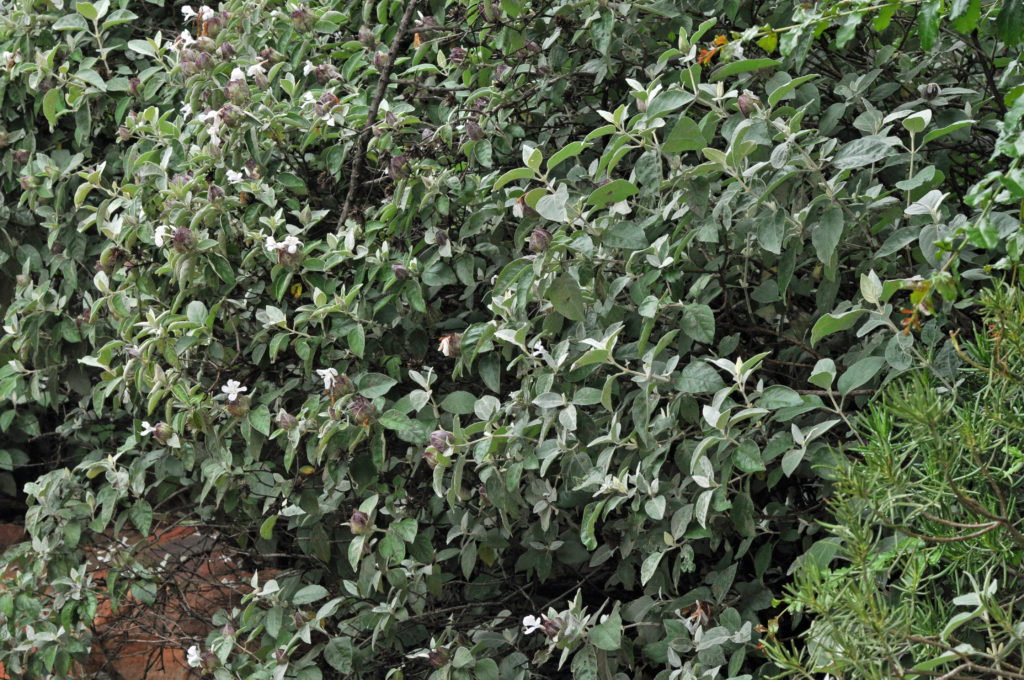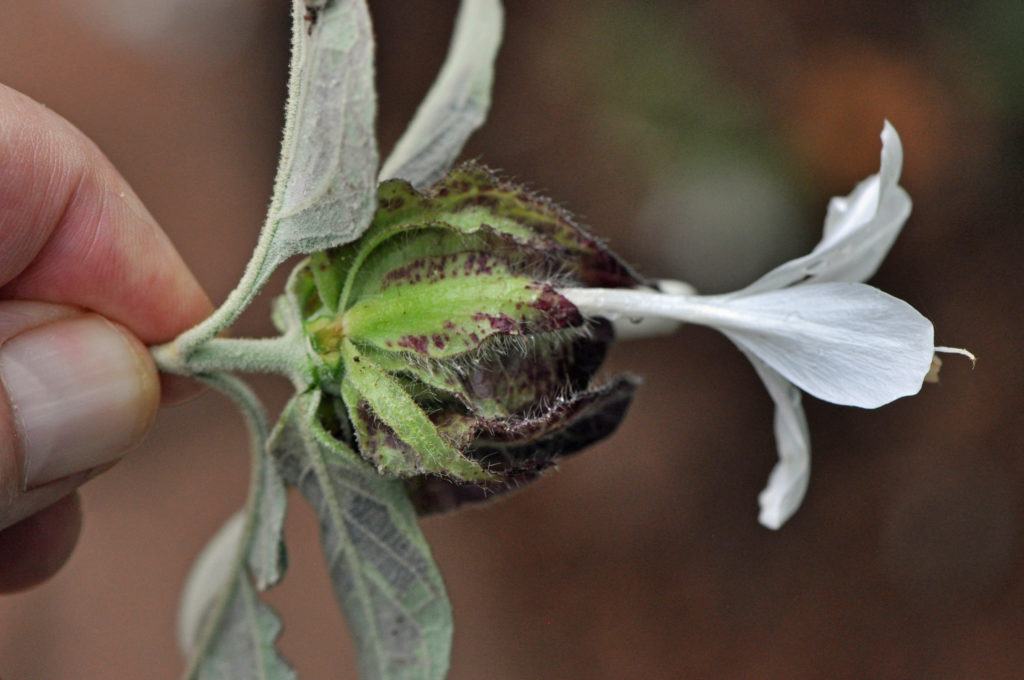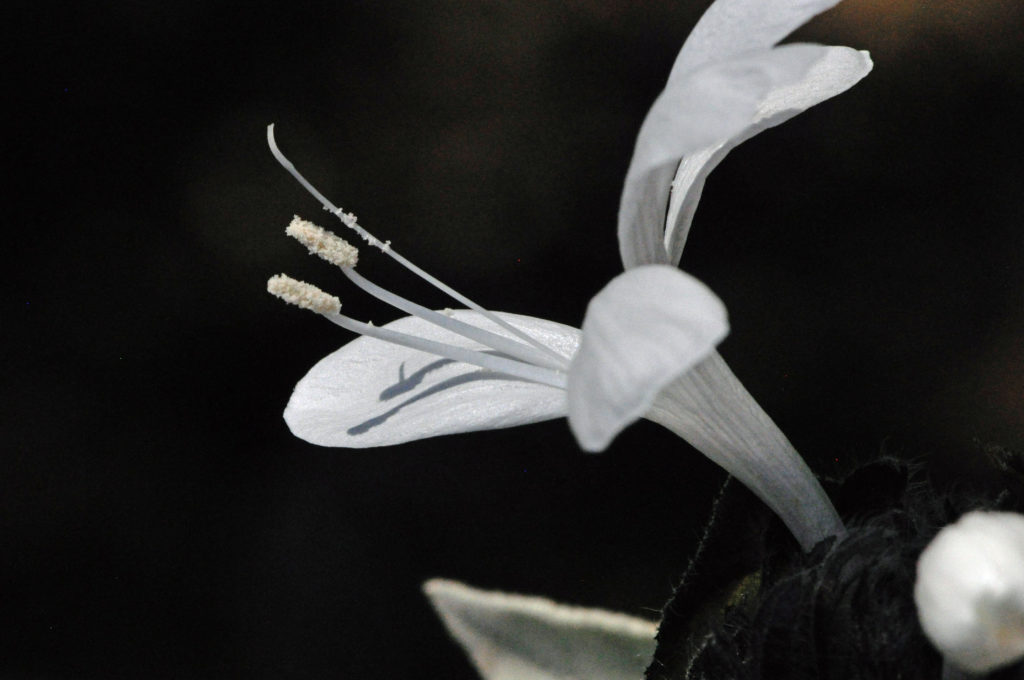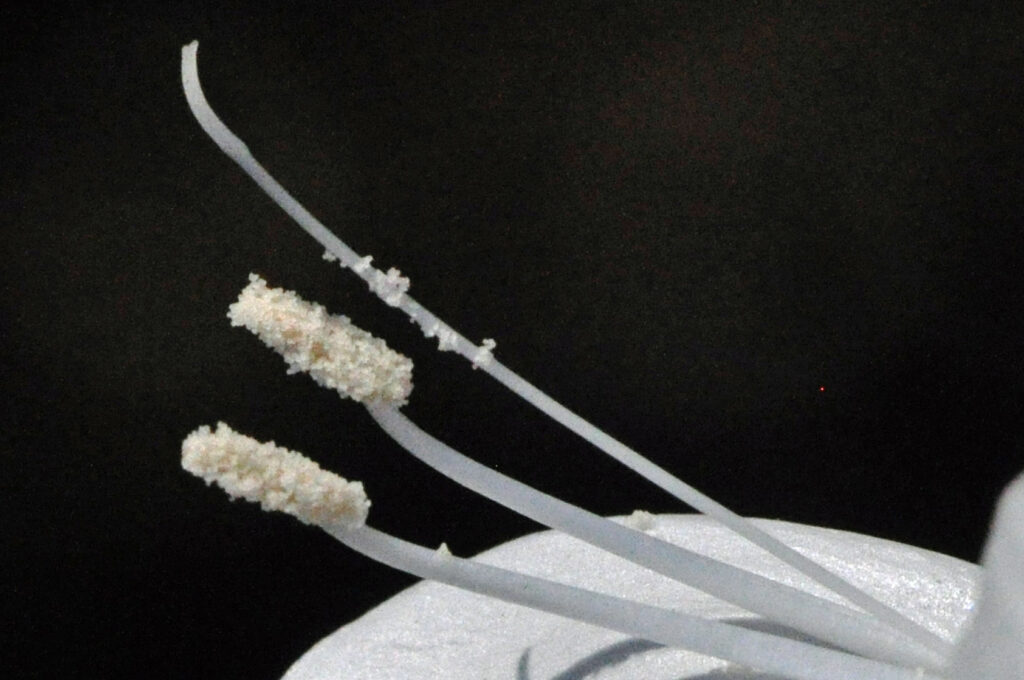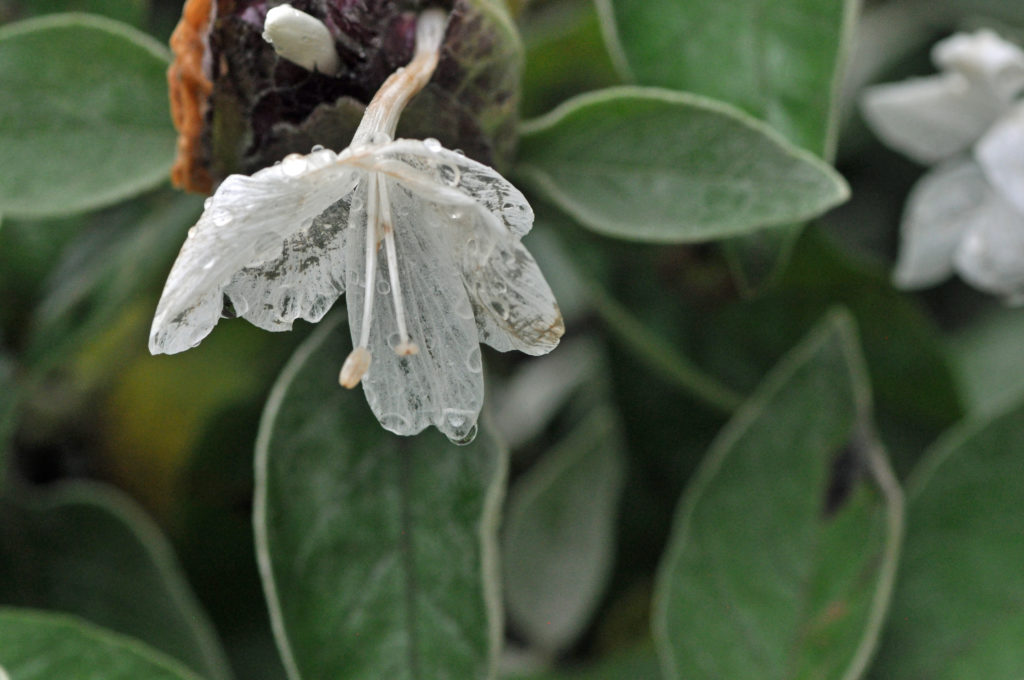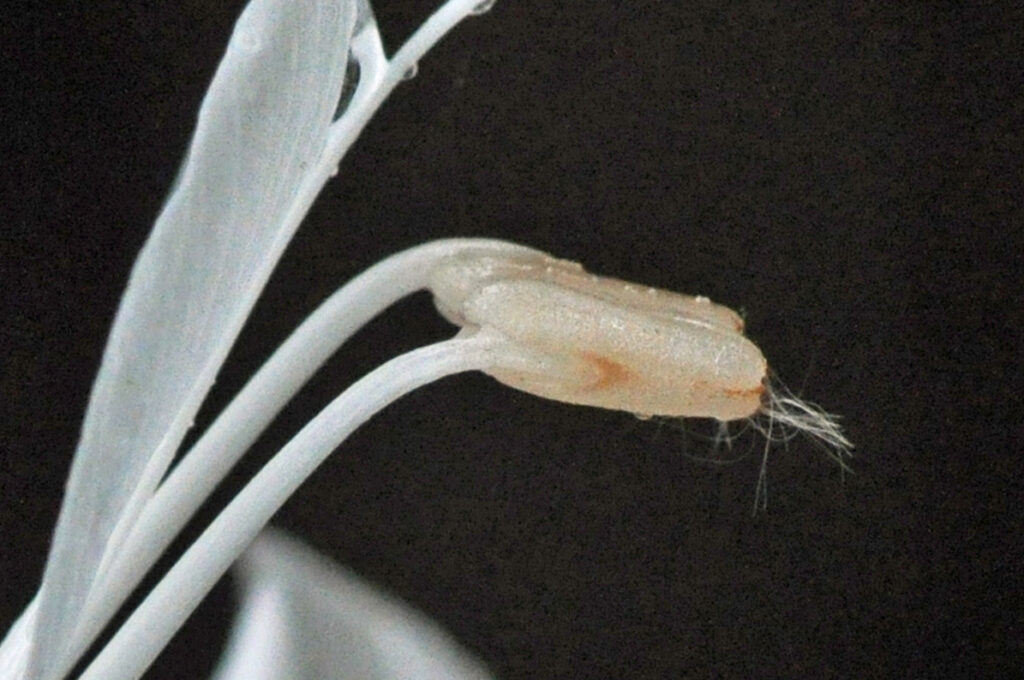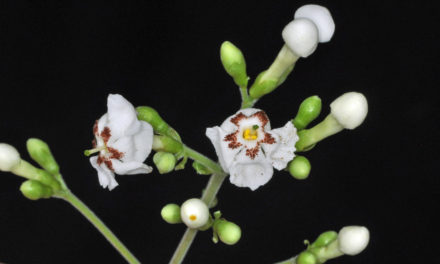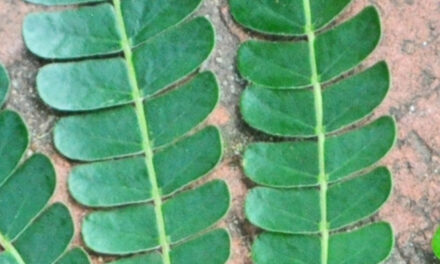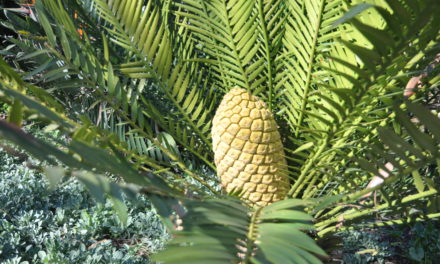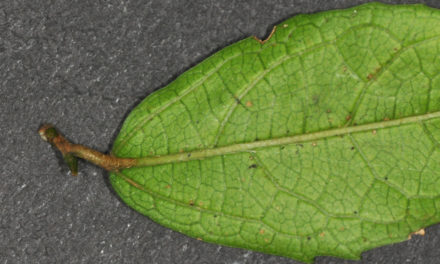Barleria albostellata
General Info – summary
This attractive unarmed Plant is up to 2+m high. Arching branches are covered with white hairs. This usually evergreen plant has opposite, simple Leaves with entire margins. The snowy white, bisexual, zygomorphic Flowers are in cymes with 1+4 white petals and 2 fertile stamens. The superior ovary has 1-2 ovules. Fruit: small, sessile, explosively dehiscent capsule, with soft seeds covered with hygroscopic hairs.
Common names: (Afr) bosviooltjie, fluweelblaarbosviooltjie, grysbarleria. (Eng) grey Barleria.
Family: Acanthaceae. (The Acanthus family). This diverse family has exceptionally taxonomic diversity with 250 genera and about 2 500 species. Most of these are shrubs, herbs and occasional climbers. All members have branched tap roots and simple Leaves without stipules. In southern Africa, there are about 191 genera and 2 000 species. All members have simple opposite petiolate Leaves and lack stipules. Most have Cystoliths (large cell wall outgrowth of calcium carbonate with a silicon containing stalk – occurring mainly in the epidermis). Leaves are mostly entire. Inflorescences are mostly with bracts – subtending each flower. The Flowers are usually zygomorphic, (irregular flower with the corolla divisible into 2 equal halves in one plane only – making them bilaterally symmetrical). Flowers are bisexual with a nectariferous (flower producing nectar) disc. The calyx is usually shorter than the corolla, which has 1-2 lips. 2 or 4 Stamens arising on the corolla are usually present. Anthers open by longitudinal slits. The superior 2-locular Ovary contains a large embryo. The thin Style has with a bilobed Stigma. The explosive dehiscent and stalkless Fruit is a 2-locular Capsule and Seeds lack endosperm. Local tree genera on this website include Barleria, Justicia and Mackaya.
Name derivation: Barleria – after the French Botanists Jacques Barrelier (1603-1673). albostellata – albo – white (flowers); stellata – star-like – referring to the hairs. About 60 species occur in southern Africa.
Conservation: National Status: L C (Least Concern). Assessed: 2006/01/19 (D. A. Kamundi).
Plant
This attractive multi-stemmed Plant (photo 963) is unarmed, a usually upright, medium to large multi-stemmed shrub, which under ideal conditions, may reach 2+m high. It may also be a scrambling multi-stemmed shrub. Branched tap roots are present. The arching Branches are slender and covered with white hairs.
- 963. 2017/11/17. Pretoria NBG. Photo: David Becking.
Leaves
Due to the overall leaf colour, this plant is known as the grey Baleria. It is usually an evergreen plant, but Leaves may be lost in cold weather. Initially both sides covered with hairs. Leaves are simple (have a single blade, which may have incisions that are not deep enough to divide the leaf into leaflets). Leaves are opposite (photo 677 – under Flowers), broadly ovate (shape of an egg with the widest point closest to the petiole) and each leaf is up to 14 x 8cm – often smaller (photo 679). The Margin is entire (with a continuous margin, not in any way indented – photo 672). Leaves are velvety grey green on both surfaces but lighter on the lower surface (photo 679) and here the Midrib and 4-7 pairs of Lateral veins protrude. On the upper surface, the veins are sunken and protrude on the lower surface (photo 679). The Apex is acute – pointed, and the Base is broadly tapering or rounded. The leaf base might be slightly decurrent (leaf blades that partly wrap or have wings around the stem or petiole (leaf stalk – photos 672 & 679). The hairy petiole is up to 3cm long and grooved on the upper surface (photo 679). There are usually 2 Serial Buds in leaf axils, the upper bud producing a normal branch or a single inflorescence and the lower bud producing a branch or vegetative spine system.
- 672. 2107/01/31. Pretoria NBG. Photo: David Becking.
- 679. 2017/01/31. Pretoria NBG. Photo: David Becking.
Flowers
The snow-white, shortly trumpet shaped Flowers are attractive and similar like those in Mackaya bella. They appear sporadically from spring to late summer. The inflorescence is a Cyme (a broad, more or less flat-topped, determinate flower cluster, with central flowers opening first). 2-4 flowers occur at branch ends. Single flowers also occur. Flowers are bisexual and zygomorphic (irregular flower with the corolla divisible into 2 equal halves in one plane only). Each flower is surrounded by 4 leafy, purple-tinged bracts (photo 667). (Bracts are modified specialised leaves usually found with inflorescences and flowers. They are different from “normal” leaves – bigger or smaller having a different shape and colour. They enclose the inflorescence and may occur in whorls). These hairy bracts may resemble a spider’s nest. The Disc (a more or less fleshy or elevated development of the receptacle) is deeply cup shaped. The Calyx is irregular with 4 lobes. The 2 large outer lobes are abaxial (facing away from the stem; lower surface of leaf) and the inner lobes are lateral and small. The thin tubular Corolla (photo 171) is irregular and gamopetalous (with united joined petals – at least at the base). There are usually 2 fertile Stamens (photo 171) inserted on the corolla. These 2 stamens are not didynamous (having 4 stamens disposed in 2 pairs of 2 different lengths). The 2 Filaments (the slender stalks that support the anthers) are long often twisted, and cross over each other. The Anthers are basifixed (photo 678) and 2-thecous (with 2 pollen sacs) that dehisce longitudinally. The 2 thecae (covering sheathes) are initially visible (photo 678) but far less so once the pollen is being shed (photo 171Enl). At this later stage, the released pollen is visible. The 2-locular superior Ovary is hairless and has 1 or 2 ovules in each Locule. The long exserted simple Style (here extending beyond the perianth) has fine hairs and is terete (circular in cross-section – photo 171). The Stigma is bilobed (photo 171E. (Sep-Feb).
- 671. 2017/01/31. Pretoria NBG. Photo: David Becking.
- 677. 2017/01/31. Pretoria NBG. Photo: David Becking.
- 171. 2018/03/14. Pretoria NBG. Photo: David Becking.
- 171Enl. 2018/03/14. Pretoria NBG. Photo: David Becking.
- 673. 2017/01/31. Pretoria NBG. Photo: David Becking
- 678. 2017/01/31. Pretoria NBG. Photo: David Becking.
Fruit
The small, explosively dehiscent and stalkless Fruit is a hairless Capsule (a dry fruit resulting from the maturing of a compound ovary, which usually opens at maturity by one or more lines of dehiscence). In this plant, it is up to 16mm long and may have a beak and seeds are explosively dispersed up to several metres. Hooked Seeds aid wind dispersal. Seeds are soft with hygroscopic (tending to absorb moisture from the air) hairs over the whole surface. (Autumn-Winter).
Distribution & Ecology
These plants occur naturally in the Limpopo (South Africa) and Zimbabwe. It grows in riverine thickets, rocky woodland and well-drained soils. They are thus Endemic (restricted to a particular geographic location) in Southern Africa. Pollinating agents are insects – including butterflies and these insects attract birds. The plant reaches maturity after about 3 years.
Ethnobotany
This attractive garden plant is slightly drought and cold resistant. Propagation is by seeds or cuttings. They grow best in full sun or semi-shade and usually below 1 500m. The plant attracts insects and birds. Pruning will enhance appearance. Traditional medicine makes use of the leaves.
References
Kamundi, D.A. 2006. Barleria albostellata C.B.Clarke. National Assessment: Red List of South African Plants version 2020.1. Accessed on 2022/09/14.
Palmer, E. & Pitman, N. 1972. Trees of southern Africa. Balkema, Amsterdam, Cape Town.
Schmidt, S. Lotter, M. & McCleland, W. 2002. Trees and Shrubs of Mpumalanga and the Kruger National Park. Jacana, Johannesburg.
https://www.plantzafrica.com/plantab/voteplant.php
http://www.zimbabweflora.co.zw/speciesdata/species.php?species_id=153500
http://posa.sanbi.org/flora/browse.php?src=SP
http://www.theplantlist.org/tpl1.1/record/kew-2669834
https://en.wikipedia.org/wiki/Acanthaceae
http://pza.sanbi.org/barleria-albostellata
2024 Botanical Society of America

